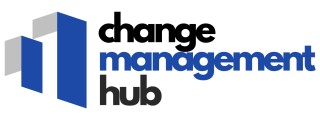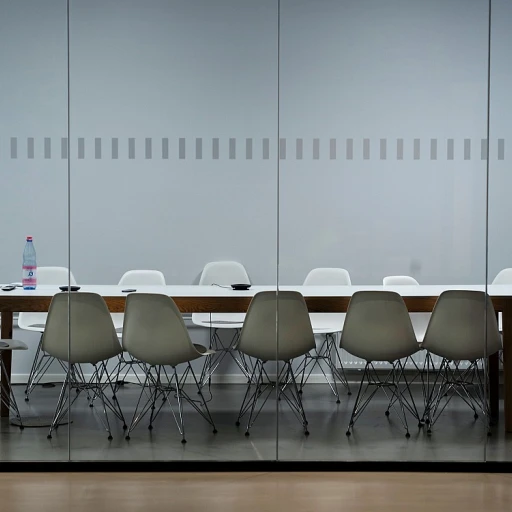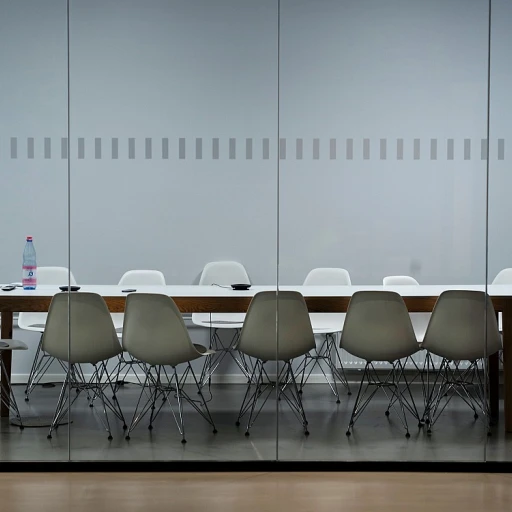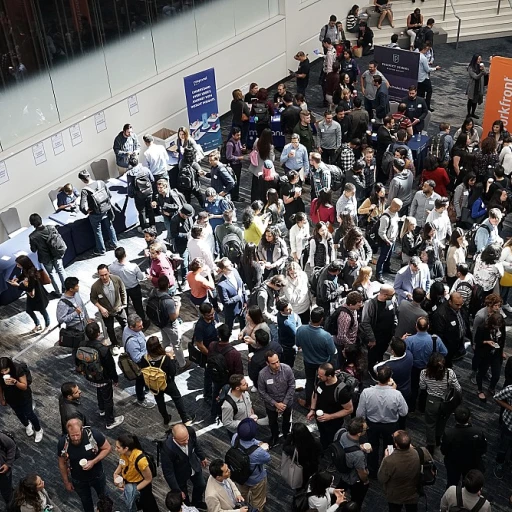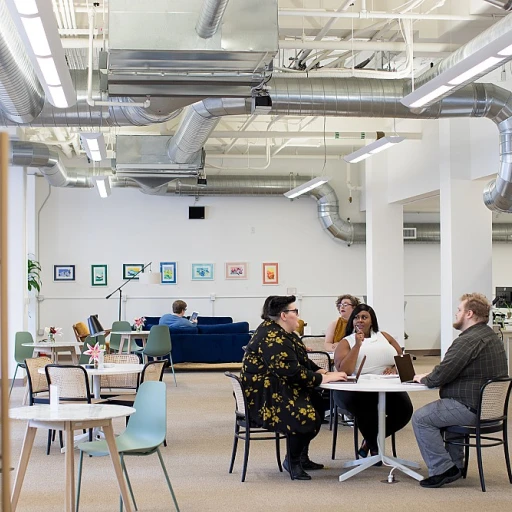
Understanding the Complexity of Standardizing Services
Complex Landscape of Service Standardization
The journey of standardizing services in business operations is far more complex than it might seem on the surface. Businesses constantly strive to achieve a delicate balance, ensuring that the benefits of standardization do not stifle the unique characteristics that define their operations. This complexity lies at the heart of understanding the processes involved in establishing standardized services.
For companies, the challenge is in part due to the diverse business processes and functions that require process standardization. Each organization, with its distinct goals, demands customized rules that align with its operational realities. Without doubt, identifying the specific organizational needs is critical because these tailor the standardized processes to ensure consistency while respecting diversity.
However, the intricate nature of this task does not end there. Ensuring consistency throughout multiple business units demands a concerted effort in synchronizing operations. Process automation and efficient use of tools become invaluable here, facilitating the repetitive tasks and allowing team members to focus on maintaining the high quality of services across the board. These initial steps are crucial in making sure that standardizing processes does not impede the organization’s brand image and flexible operation strategies.
In short, embracing a strategic standardization process, while challenging, lays the groundwork for offering high-quality services consistently and effectively. Efforts to standardize must consider both process adherence and compliance requirements, further emphasizing the need for a comprehensive strategy. Moving forward in this series, we will delve deeper into the significant steps, challenges, and technologies shaping the future of standardized services.
Identifying Unique Organizational Needs
Customizing Standardization to Match Business Goals
When it comes to standardizing services within an organization, one size certainly does not fit all. Each organization has its own unique set of needs, which stem from various factors such as industry, company culture, and operational goals. Thus, identifying these needs is crucial for developing effective process standardization strategies. In aligning your business process — and ultimately your services — with your specific objectives, you ensure that the outcome is not only efficient but also adds value to your operation.
As an organization, you will encounter a diverse range of operations and workflows, all with their own importance. Therefore, pinpointing which processes can benefit from standardization becomes a necessary step in the planning phase. This step will help you focus resources on areas that will have the most significant impact. In fact, identifying critical business processes that require consistent output and quality can provide a solid foundation for organization-wide improvements.
Continue by honing in on elements that require consistency and look for opportunities where standardization will help eliminate bottlenecks or repetitive tasks, enhancing employee performance. By aligning standardized processes with organizational objectives, you can optimize workflows and ensure high-quality delivery of services to clients. Businesses can also tap into best practices from other industries that have successfully implemented similar standards to ensure a balanced approach.
Moreover, taking the time to understand unique needs lays the groundwork for building an adaptable environment where team members can work cohesively with process automation and standardized tools. This means that employees need to be involved in discussions on how standardizing processes can facilitate their work and improve their business outcomes. Use a toolset that supports modification and customization to adapt business processes as they evolve, ensuring ongoing refinement and adherence to the established standards.
Learn more about how different organizations have used these strategies in real-world scenarios by exploring this blog on corporate service corps involved in change management.
Balancing Flexibility and Consistency
Striking the Right Balance
One of the major challenges in standardizing services within change management is finding the right balance between flexibility and consistency. Maintaining consistency through standardized processes is crucial for ensuring quality and meeting client expectations. However, organizations must also remain flexible to adapt to shifting business environments and unique client needs.
Standardization efforts often involve implementing a set of standards and protocols that team members must adhere to. This can include business processes such as process automation, quality checks, and best practices that are crucial for delivering high-quality services. But this structured approach must not stifle creativity or hinder the ability of employees to tailor solutions according to specific circumstances.
To achieve this balance, organizations can employ a few strategic approaches:
- Empower employees with training and the right tools to make informed decisions when customizing services for clients, allowing for a degree of personalization within a standard framework.
- Use process standardization to identify areas that benefit from having a consistent approach, while recognizing processes that require flexibility and adjust accordingly.
- Ensure all team members understand the importance of maintaining a strong brand image by sticking to core processes that define the organization’s value proposition and marketing strategy.
- Leverage social media feedback and client interactions to determine where flexibility is needed and where standardized services should be reinforced.
Balancing flexibility with consistency not only helps in tailoring standardized processes to diverse needs, but also can enhance employee and managerial roles in the evolving business landscape, thereby aiding the overall objective of efficient change management.
Overcoming Resistance to Change
Addressing Barriers in the Change Process
When it comes to process standardization in change management, overcoming resistance can often present the greatest hurdle. The willingness to embrace new standards and processes is essential for both employees and leadership within an organization. Identify Core Concerns Before implementing any standardization, it’s crucial to understand why employees might resist. These concerns often stem from fears of reduced autonomy, increased workload due to new processes, or a perceived threat to job security. By identifying core concerns early, businesses can address them proactively. Engage Team Members Engagement is a vital step in reducing resistance and ensuring successful standardization. Team members who feel involved in the change process are more likely to adopt new processes. Encourage open communication and create forums where employees can voice their concerns. This also ensures a more inclusive environment where collective input can lead to more robust business processes. Highlight the Benefits Helping employees understand the benefits of standardized services, such as improved consistency and high-quality outcomes, can build support for change. Sharing case studies and examples where process standardization has led to tangible improvements will help in persuading skeptics. Ensure Ongoing Support Providing adequate training and resources ensures a smooth transition. This includes utilizing tools and best practices tailored to the specific needs of the organization. Ongoing support, such as coaching or help desks, can alleviate stress and reinforce confidence in the new standards. Empower Through Technology Leveraging process automation and technology can mitigate repetitive tasks that often lead to resistance. Technological tools can free up employee time, enabling them to focus on more strategic efforts. This shift not only boosts morale but also aligns with the company’s broader marketing strategy and brand image. Implementing these steps will help organizations overcome resistance and bolster the implementation of standardized services and processes. By addressing barriers comprehensively, businesses can ensure more effective and sustainable change management.Leveraging Technology for Standardization
Harnessing Technology for Seamless Standardization
Embracing technology can significantly streamline the standardization process within an organization, enhancing consistency and efficiency. As businesses aim to offer high-quality standardized services, leveraging the right tools becomes crucial. By utilizing process automation, companies can reduce the burden of repetitive tasks, allowing employees to focus on higher-value activities.
With advanced software, organizations can identify areas for improvement and implement standardized processes more effectively. These tools ensure consistency across service delivery, reinforce standardized standards, and help maintain a strong brand image. Furthermore, technology supports the documentation of best practices, ensuring that valuable insights are retained and shared across team members.
Incorporating process standardization solutions not only improves service quality but also strengthens client relationships by delivering reliable and consistent experiences. As technological advancements continue, businesses must stay informed about emerging tools that can aid in standardizing processes, thereby fostering a more agile and responsive organizational culture.
Ultimately, aligning technology with business processes will help in overcoming challenges associated with standardizing services. This synergy enables organizations to achieve operational excellence while meeting the unique needs of their clients and upholding their marketing strategy.
Case Studies: Successes and Lessons Learned
Real-world Examples of Implementing Standardized Services
Implementing standardized processes in business services can be intricate but rewarding. It's essential to learn from those who have navigated these waters before. Below are two case studies that demonstrate successes and lessons in standardization within organizations.Case Study 1: A Global Technology Firm's Journey to Consistency
A leading global technology firm recognized the need for refinement in their service operations. As part of their journey towards process standardization, the firm's primary goals were to improve service delivery consistency and client satisfaction across their global units. Challenges and Solutions:- Diverse Business Processes: The company faced varying operational processes across different regions, which led to discrepancies in service quality.
- *Solution*: They identified these areas of disparity and established universal service standards, which were communicated across all teams. Training sessions were held to ensure employees understood and adhered to these new standards.
- Resistance to Change: Some employees initially resisted the new standardized processes.
- *Solution*: Engagement tools and frequent communications were employed to demonstrate the benefits of standardization, which gradually fostered acceptance and commitment.
- Technological Integration: The firm struggled with outdated tools that couldn't support the new standardized services.
- *Solution*: Proper process automation tools were introduced, facilitating smooth adoption of the standardized services, significantly reducing repetitive tasks and improving efficiency.
Case Study 2: A Retail Chain's Standardization Roadmap
Another insightful example comes from a well-established retail chain aiming to boost their competitive edge through robust process standardization. Challenges and Solutions:- Inconsistencies in Service Delivery: The retail chain observed varied customer experiences across stores.
- *Solution*: By adopting a uniform set of service standards and employing consistent training sessions, all team members were aligned with the chain's expectation for high-quality service. This also helped maintain brand image integrity.
- Time Management: Prioritizing time spent across various initiatives was a concern.
- *Solution*: Implementing standardized processes allowed the chain to streamline operations, focusing efforts on activities that improved profitability and customer satisfaction.
